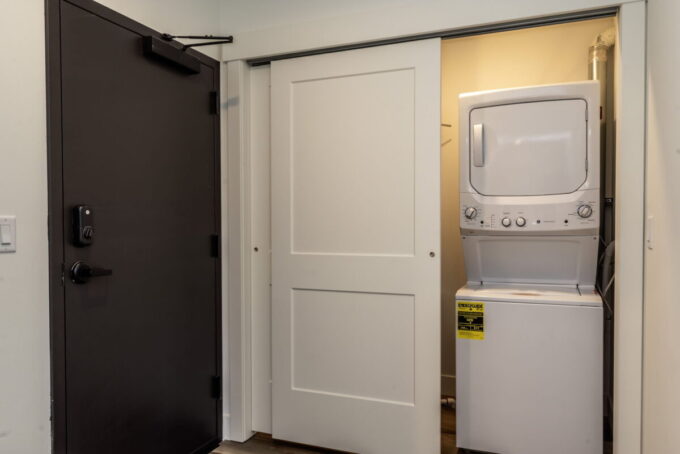The Value of In-Unit Laundry in Multifamily Apartments
Property managers and developers strive to differentiate their offerings and enhance the tenant experience. One feature that greatly impacts both resident satisfaction and property value is in-unit laundry. This article explores the benefits of in-unit laundry and how it can maximize returns.
Convenience and Privacy for Residents
In-unit laundry provides unmatched convenience and privacy for residents. It eliminates the need for communal laundry facilities or off-site laundromats, saving residents time and hassle. Moreover, tenants can do laundry in their homes, offering flexibility and control over their daily routines. As a result, this convenience improves their quality of life and fosters a sense of independence and privacy.
Financial Benefits: Increased Income and Property Value
Investing in in-unit laundry offers substantial financial benefits. Studies show that adding in-unit laundry can increase monthly rents by $75 to $150 per unit. This rental premium reflects the high demand for convenience, and tenants are willing to pay more for it. Over time, the additional income from higher rents enhances the property’s profitability.
In-unit laundry also boosts the property’s resale value. Research shows that in-unit laundry can increase the resale value of each unit by $4,000 to $10,000. This value appreciation makes in-unit laundry a desirable amenity and a smart investment for property owners seeking maximum returns.
Space-Efficient and Eco-Friendly Solutions
Modern in-unit laundry solutions prioritize space efficiency and environmental sustainability. Compact, stackable washers and dryers fit easily into small closets or alcoves, making them ideal for apartments with limited space. These appliances reduce water and energy consumption, aligning with the growing demand for eco-friendly living options.
By installing energy-efficient appliances, property owners contribute to a more sustainable living environment, appealing to environmentally conscious renters. The lower utility costs associated with these appliances are an additional selling point, attracting tenants who prioritize sustainability.
Attracting High-Quality Tenants
In-unit laundry attracts high-quality tenants willing to pay a premium for added comfort and privacy. These tenants are often more responsible and financially stable, leading to lower turnover rates and more consistent rental income. Therefore, property managers enjoy greater stability and predictability in their rental operations as a result.
Enhancing Property Value Through Design
Property managers and developers always seek ways to enhance property value while improving the tenant experience. An experienced architect plays a crucial role in achieving this goal. Whether through renovation or new construction, architects can creatively and cost-effectively incorporate in-unit laundry into multifamily apartments.
For existing properties, architects evaluate available space and propose solutions that minimize disruption while maximizing added value. In new developments, architects can integrate in-unit laundry into the initial design, ensuring the feature is seamlessly incorporated without compromising other aspects of the building’s layout.
Conclusion
In summary, in-unit laundry offers a unique combination of convenience, privacy, and financial benefits, making it a highly valuable feature in multifamily apartments. By investing in this amenity, property owners can increase rental income, enhance property value, and attract high-quality tenants. In addition, the environmental benefits of modern in-unit laundry solutions align with the growing demand for sustainable living options. With the help of an experienced architect, property managers can successfully incorporate in-unit laundry into their properties, reaping the rewards of this smart investment.
References:











